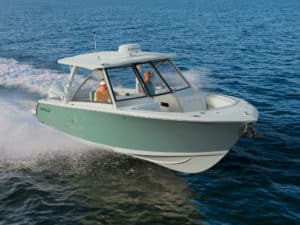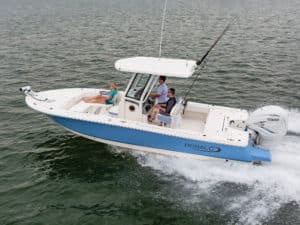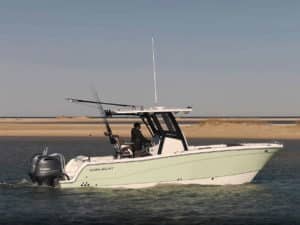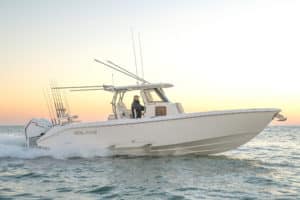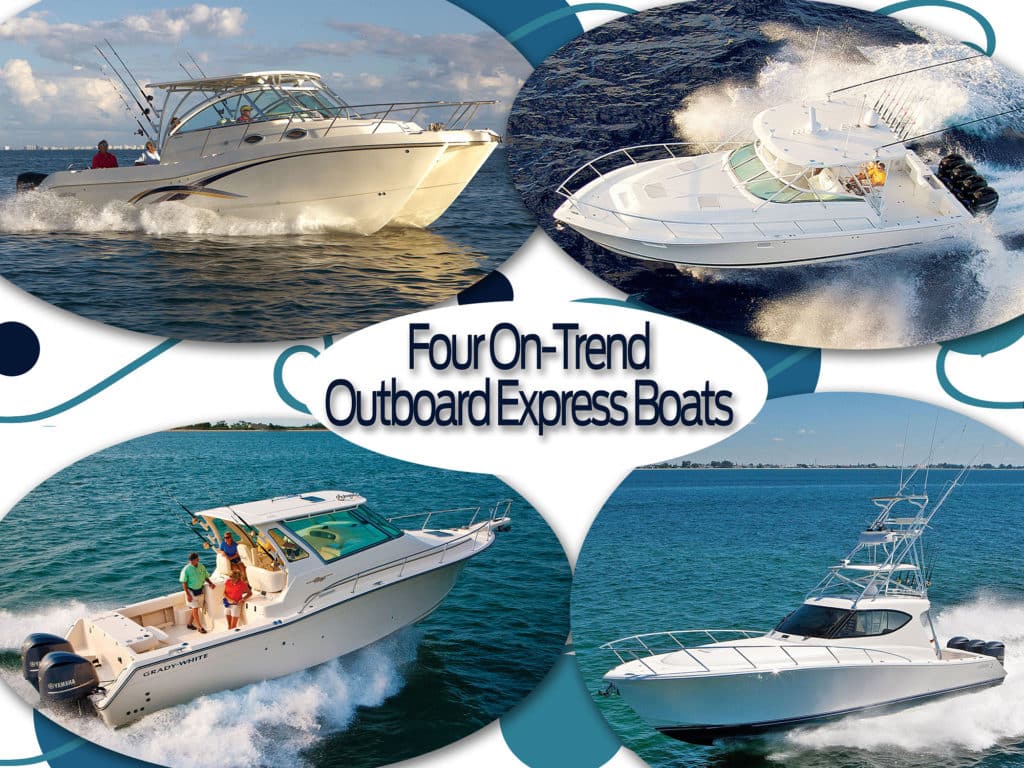
When celestial bodies align, navigators know the way forward. The same apparently applies to boatbuilders.
During the mid-aughts, as the economy dipped, the owners of expensive inboard-powered sport-fishing boats looked to downsize. That trend aligned with the introduction of more powerful four-stroke outboard engines in the 300 hp and 350 hp range. The resulting solution: outboard-powered express boats.
Now, as financial conditions improve, owners of smaller walkarounds are looking to upsize to outboard-powered expresses, creating a perfect mix of opportunity and growing demand.
To further explore this star-guided market change, I talked to four outboard-powered-express makers. Here are their thoughts and comments. (Boats are listed alphabetically.)
Grady-White Express 370
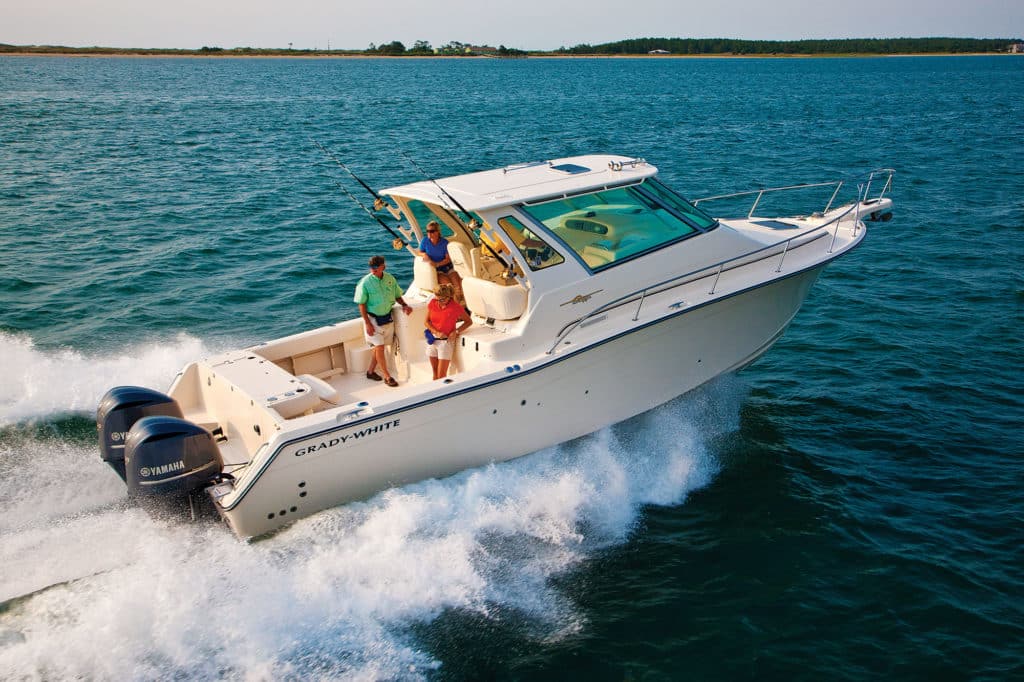
Grady actually built two of its Express models (the 330 and 360) before the economic downturn. “For our market, many times our Express series is a move up the boating scale,” says Shelley Tubaugh, marketing vice president.
But as the economy declined, Grady watched the buying trend reverse. “We saw people with larger models come down from 60-, 50- or even 45-foot sport-fishers into our Express models,” Tubaugh says, “as something that still gave them great range to fish offshore yet was far more economical to use and maintain, as well as easy for one person to handle alone.”
Customers who downsize say they don’t miss the costly annual maintenance of a large inboard boat. The quiet hum of outboards — which operate without that diesel stench — is a welcome change too, Tubaugh says. Outboard boats also perform and handle more nimbly than slower inboard giants.
Tubaugh says that Grady’s long history with outboards gave the company a distinct advantage in developing its larger Express models. “We have been able to combine the best things from traditional express boats — a commanding captain’s station with clear visibility and an ergonomic layout, a large fishing cockpit, and roomy, luxurious cabin interiors — with our SeaV2 hull and quiet, economical Yamaha four-stroke engines,” she says. “The bottom line is that the outboard design greatly improved the utility of the express layout by giving more room, less noise and vibration, and better safety.”
Grady-White Express 370
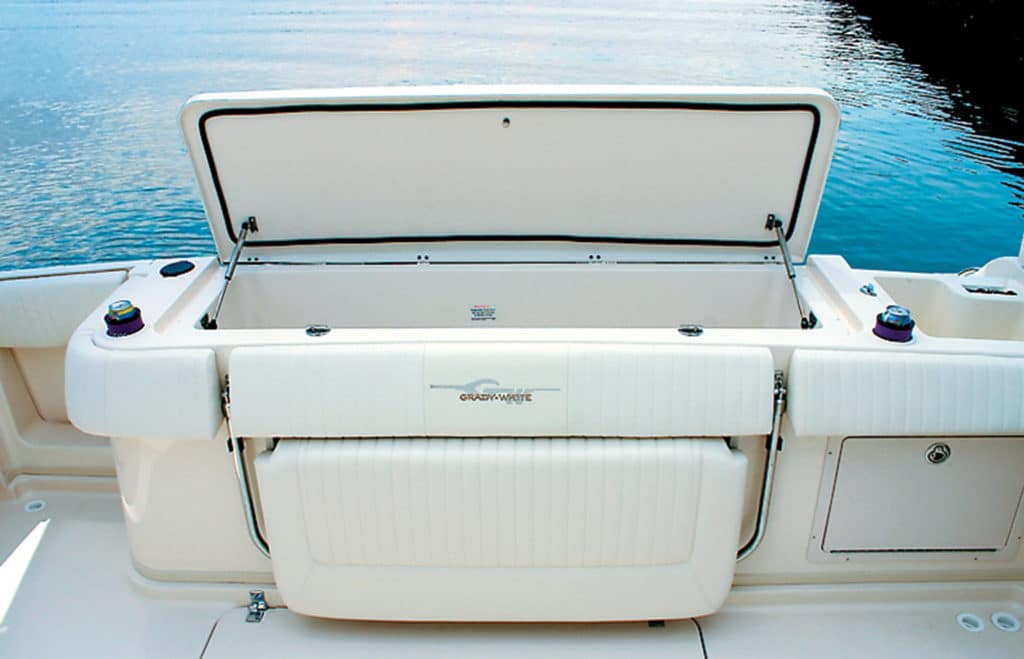
Tubaugh says she still sees the outboard-express market as a niche. Grady currently offers two models, the 370 and the 330. “There will always be those who wish to venture farther out and to spend the night on the water,” she explains. “The Express outboard cabin models we offer give our customers that opportunity.”
SPECS: LOA: 36 ft. 7 in. • Beam: 13 ft. 2 in. • Transom Deadrise: 20 deg. • Draft: 29 in. • Dry Weight: 14,919 lb. • Max Power: 1,050 hp • MSRP: $624,360 (w/ triple Yamaha F300s)
Jupiter 41 Express
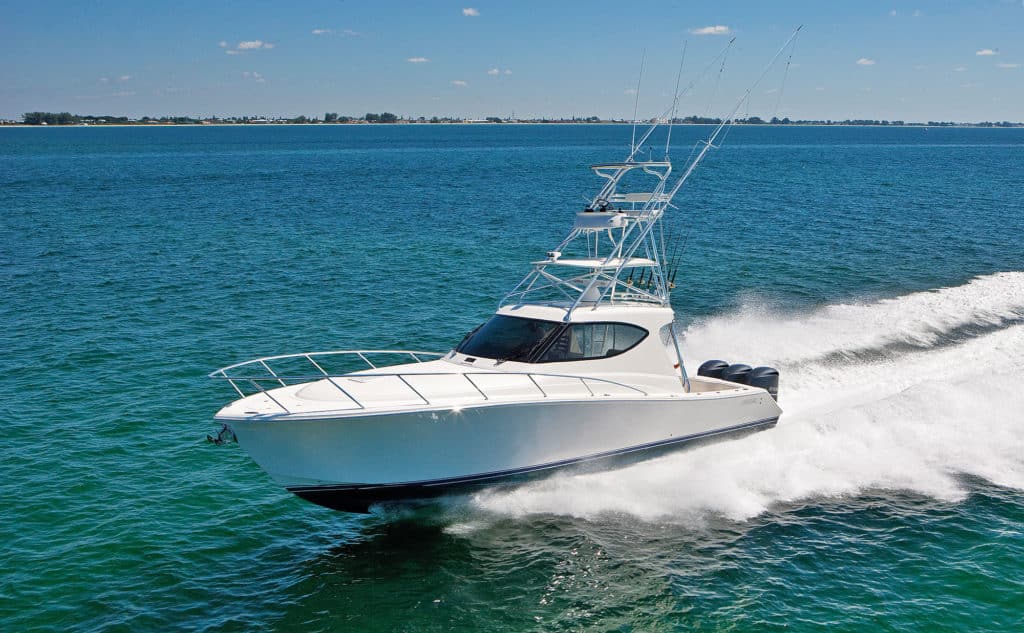
According to 2015 marketing data, the outboard-express segment grew by more than 22 percent over 2014, even though builders that currently produce express-type boats are a small part of the outboard crowd, says Patrick Bucci, national sales representative for Jupiter Marine.
“The express segment continues to grow, especially in the 28- to 45-foot category,” Bucci says. “Consumers still want berth accommodations, comfort features, and ways to escape the elements in different climate situations.”
To build an outboard-powered express means considering a drastic redistribution in weight, an altered deck layout, and a redesigned hull. “Running surfaces have to be reworked or restructured entirely to feature better performance and promote increased top speeds over previous models that were commonly powered with diesel inboards designed to function at lower top speeds,” Bucci says. “The features need to be relocated to different places throughout the boat, especially as it pertains to cabin and cockpit layouts. As an example, midberths have become common in outboard expresses as a way to utilize space where fuel cells, equipment and engines were previously located.”
Jupiter 41 Express
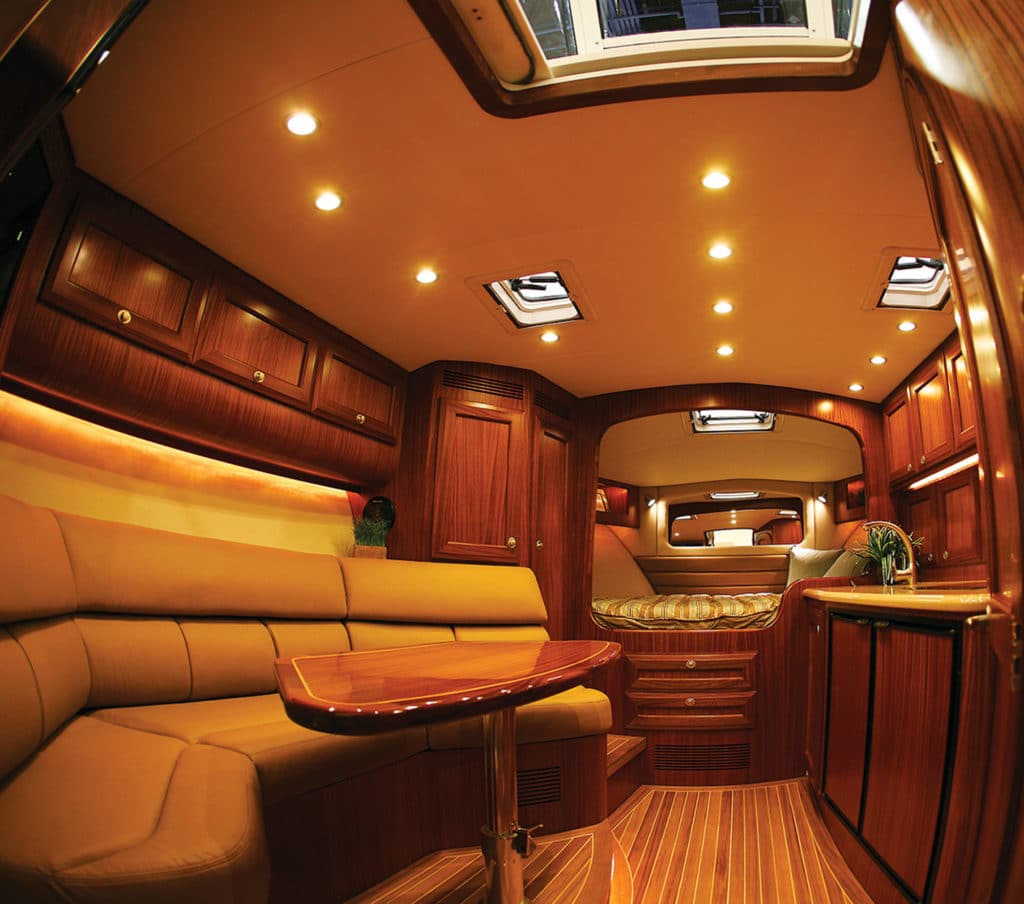
Bucci says he expects this market to remain healthy into the future because it offers anglers an additional choice over center- or dual-console models within the same length category, and may be more in tune with their fishing and boating lifestyle.
SPECS: LOA: 40 ft. 3 in. • Beam: 12 ft. 8 in. • Transom Deadrise: 18 deg. • Draft: 25 in. • Dry Weight: 12,750 lb. • Max Power: 1,200 hp • MSRP: $786,560 (w/ quad Yamaha F300s)
SeaVee 430 Express
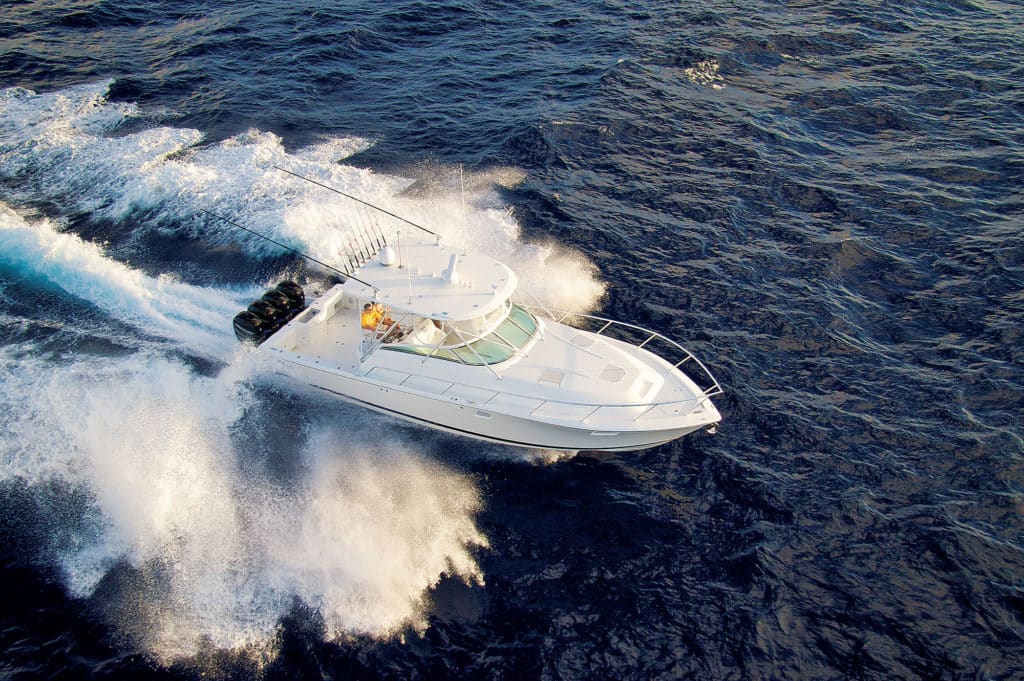
While the overall interest in outboard expresses has been driven somewhat by a desire to downsize, SeaVee marketing director John Caballero says the greater interest in these types of boats is also due to their increased availability: “In the last 10 years, there’s been a confluence of technology that brings to market higher-horsepower outboards; electronic engine controls, making multiengine control simple and easy; and boatbuilders like SeaVee that have designed boats to leverage these new advantages.”
Designing the 430 Express and its sister ship, the 430 Fish-Around, required new thinking, starting from the transom and motorwell and extending throughout the entire boat, Caballero says. “The use of outboard power significantly altered the fundamental arrangements, machinery, tank plan and structures. It opened more space inside the boat for the customer, including more and better tankage, more space and access for auxiliary machinery, and more in-deck space for fish boxes and storage,” he says.
With outboards as power, SeaVee could locate fuel tanks under the bridge deck, where the inboards would normally reside. That helped ensure the tanks were anchored above the center of gravity, allowing the boat to run and trim optimally regardless of fuel load. The cockpit could also expand to resemble an open fisherman, he says, with massive fish-box storage.
SeaVee 430 Express
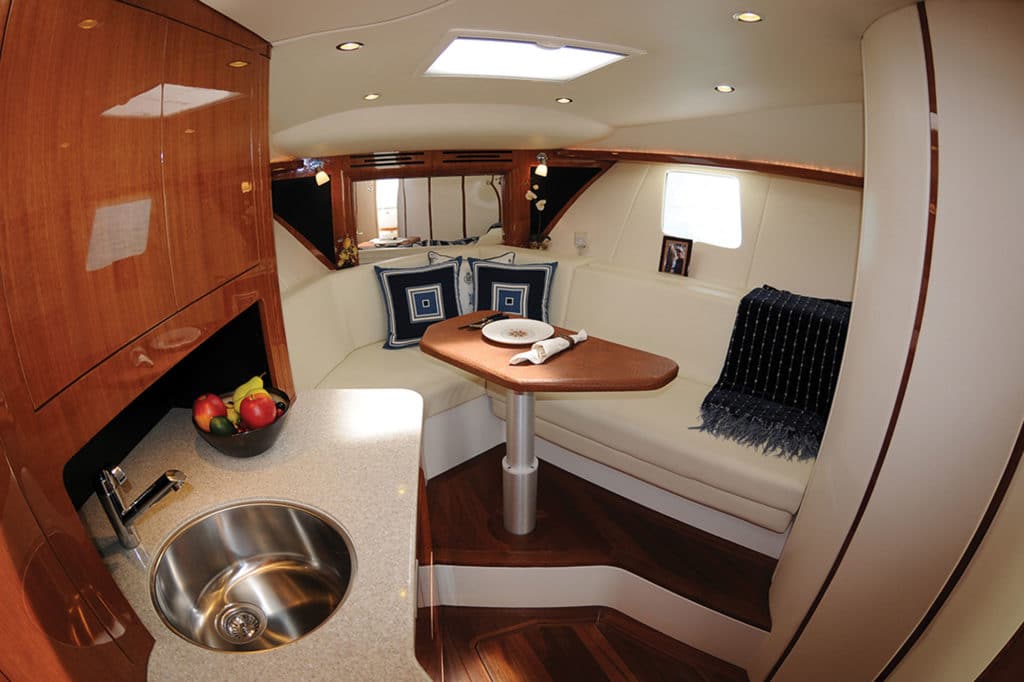
Finally, the whole longitudinal center of gravity of the boat could be located farther aft in a more optimal location for performance and handling, and this greatly improved the performance of the boat, in addition to the lighter and higher horsepower provided by the outboards,” Caballero says.
With these advantages, this niche express market will likely continue to grow commensurate with technological advances in the outboard engines. “A high-powered diesel outboard engine is rumored to be forthcoming in the near future,” he says, “bringing even more potential buyers into the category.”
SPECS: LOA: 43 ft. • Beam: 13 ft. 4 in. • Transom Deadrise: 22 deg. • Draft: 27 in. • Dry Weight: 20,450 lb. (w/o engines) • Max Power: 1,400 hp • MSRP: $623,200*
World Cat 320EC
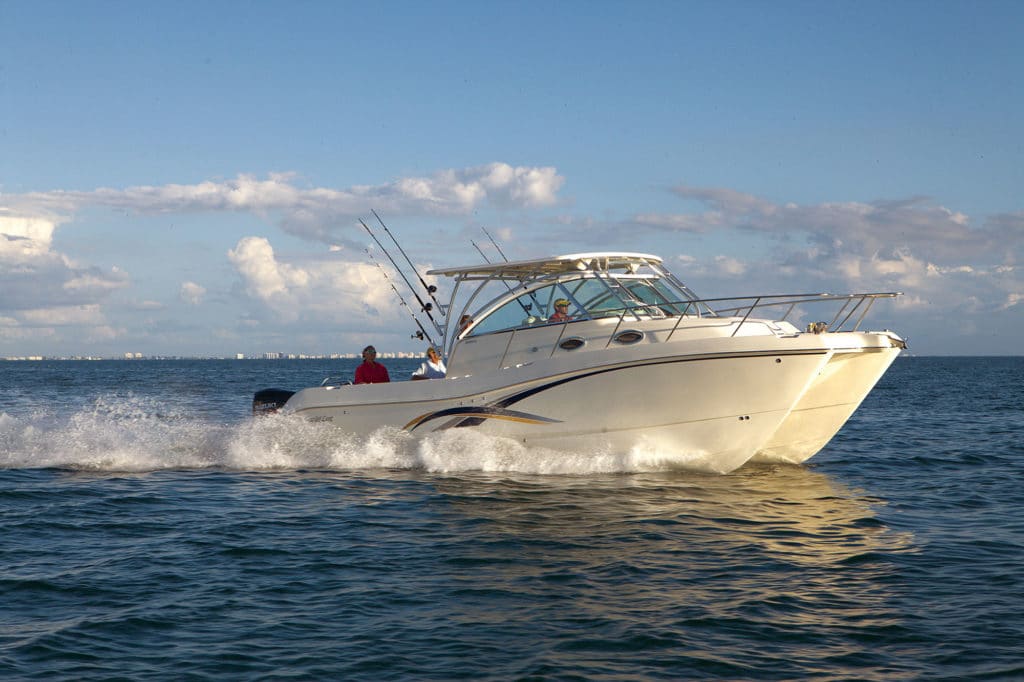
Fortunately for World Cat, catamaran builders by necessity became some of the earliest manufacturers to adopt and use the four-stroke outboard option for express-style boats, says marketing vice president Dave Tuchler.
“This engineering heritage allowed us to evolve and smoothly adapt as available horsepower increased,” he says. “During the recession, we launched the 320EC with Yamaha F300s, specifically for the customer who no longer desired the larger sport-fishers but desired the ability to maintain the same adventuresome lifestyle.”
Catamarans by design feature greater beam from bow to stern than most monohulls, and consequently more fish-fighting space all around the boat for anglers.
“The strategy was to utilize the V-6 Yamaha 300 and take full advantage of its horsepower and fuel economy,” says Tuchler. “We matched the displacement of the 320EC with the torque and horsepower of the motor to maximize interior amenities yet maintain exceptional performance.”
Today’s outboards offer distinct advantages over inboards. “The sophistication and efficiency of outboards eliminates the diesel smell and characteristic vibration of inboards,” Tuchler says. “In addition, due to the placement of outboards, servicing is easier. Finally, locating the motors outside the transom frees up valuable onboard space.”
Tuchler expects the trend toward larger-horsepower express boats to expand. That growth in turn should drive more innovation, he says.
SPECS: LOA: 32 ft. 2 in. • Beam: 10 ft. 6 in. • Transom Deadrise: N/A (catamaran) • Draft: 16 in. • Dry Weight: 11,400 lb. • Max Power: 600 hp • MSRP: $344,173*

